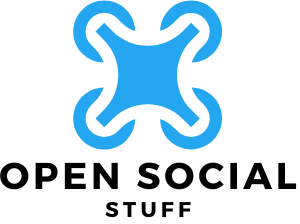In the ever-evolving world of technology, programming languages are the unsung heroes behind every app, website, and gadget that makes life a little easier—and sometimes a lot more confusing. While some folks think coding is just a bunch of cryptic symbols, it’s really a fascinating blend of logic, creativity, and a dash of caffeine. Understanding the core concepts of programming languages can transform anyone from a bewildered novice into a confident coder ready to tackle the digital universe.
Table of Contents
ToggleOverview of Concepts in Programming Languages
Programming languages possess various essential concepts that form their foundation. These concepts include syntax, semantics, and pragmatics. Syntax refers to the set of rules governing the structure of statements and expressions. Every programming language has a unique syntax that dictates how instructions are written.
Semantics focuses on the meaning behind those syntactical structures. Semantic rules ensure that written code conveys intended actions. Understanding both syntax and semantics allows programmers to write functional and correct code.
Pragmatics concerns how programming languages are applied in practical scenarios. It encompasses the context in which code runs and the environment that executes it. Different languages are optimized for specific tasks, demonstrating the importance of choosing the right language for the job.
Control structures play a crucial role in directing program flow. These structures include loops, conditionals, and functions. Loops enable repetition, conditionals allow decision-making, and functions promote modular code, enhancing reusability.
Data types delineate the kinds of values a program can handle. Common data types include integers, floating-point numbers, strings, and booleans. Understanding these types helps programmers manipulate data effectively.
Abstraction simplifies complex systems by representing them at a higher level. It aids in managing complexity, allowing programmers to focus on relevant details. Object-oriented programming exemplifies abstraction by grouping data and behavior into objects.
Finally, data structures provide efficient methods for organizing data in programs. Arrays, lists, and hash tables represent popular data structures. Choosing the right data structure optimizes performance and memory usage.
These core concepts enable programmers to transition from novice to proficient, fostering a better understanding of coding’s art and science.
Syntax and Semantics
Syntax plays a crucial role in programming languages. It establishes the formal rules dictating how code structures form valid statements. A programmer must use these rules to create readable and meaningful programs. Various programming languages present unique syntactical rules, from indentation in Python to braces in C++. Mastering syntax allows developers to write code that compiles without errors, ensuring their logic translates into functioning applications.
Definition of Syntax
Syntax defines the arrangement of symbols, keywords, and operators within a programming language. Each language possesses its own syntactic rules determining how statements connect. For example, in Java, a statement requires a semicolon at the end, while Python uses indentation to denote code blocks. Correct syntax is essential for code to be interpreted accurately by a compiler or interpreter, impacting how effectively a program runs.
Understanding Semantics
Semantics interprets the meaning behind correctly structured code. While syntax focuses on structure, semantics provides insight into the implications of that structure. Statements with identical syntax can have varied semantics based on their context or the language used. In C++, an assignment operator assigns a value, while in a language like Prolog, it may relate variables in a logical context. Semantic understanding helps programmers determine if their code behaves as expected, ensuring desired outcomes in applications.
Data Types and Structures
Data types define the nature of values that can be manipulated in programming. Understanding these types underpins effective coding practices.
Primitive Data Types
Primitive data types serve as the building blocks of data manipulation. They include integers, floating-point numbers, characters, and booleans. Integers represent whole numbers, while floating-point types manage decimal values. Characters hold single textual elements, such as letters or symbols. Boolean types indicate true or false conditions, playing a crucial role in decision-making processes. Each programming language may vary in the way it implements these types, but their fundamental importance remains constant across environments.
Complex Data Structures
Complex data structures enable the organization of related data into cohesive units. Arrays allow for the storage of multiple items under a single variable name, facilitating a more efficient method of data handling. Linked lists provide a dynamic way to structure data that can grow or shrink in response to program requirements. Stacks and queues offer unique approaches to data access, with stacks adhering to Last In First Out (LIFO) and queues following First In First Out (FIFO) principles. Understanding these structures enhances problem-solving capabilities, showcasing how different types of data interact and function together.
Control Structures
Control structures play a crucial role in determining the flow of execution in programming languages. They enable programmers to dictate how code behaves based on certain conditions or to repeatedly execute specific sections of code.
Conditional Statements
Conditional statements allow the execution of code based on specific criteria. If a condition evaluates as true, the associated block of code runs; otherwise, it skips or executes an alternative block. Languages offer various constructs such as if, else if, and switch to handle decision-making processes. For instance, an if statement checks a condition, executing the following code only if it holds true. Understanding how these statements function equips programmers to create responsive applications, leading to dynamic user interactions.
Loops and Iteration
Loops facilitate repeated execution of a block of code as long as a specified condition remains true. Common types include for, while, and do-while, each serving different scenarios effectively. A for loop iterates a fixed number of times, while a while loop continues until a condition fails. Leveraging loops enhances efficiency in tasks such as processing items in a list. Mastering loops allows programmers to simplify tasks that require repetition, resulting in cleaner, more manageable code.
Functions and Procedures
Functions and procedures play crucial roles in programming. They encapsulate reusable code, enhancing efficiency and readability.
Definition and Purpose
Functions represent self-contained blocks of code designed to perform specific tasks. Procedures, often used interchangeably with functions, may not return a value but still execute a sequence of operations. Most programming languages allow developers to define these constructs, which can accept inputs, called parameters, and execute a series of statements.
Their purpose lies in promoting code reusability and organization. Instead of writing the same code multiple times, programmers can call a function or procedure whenever needed. This approach not only reduces redundancy but also simplifies debugging and maintenance. Clear definitions contribute to improved collaboration among programmers, making it easier to share and manage code.
Scope and Lifetime
Scope determines the accessibility of functions and procedures within a program. Each function or procedure can define its own variables, which exist only within its scope. Local variables maintain their values only during the function’s execution, disappearing once it finishes. Conversely, global variables are accessible throughout the entire program, potentially leading to conflicts if not managed carefully.
Lifetime refers to how long these variables exist in memory. Local variables exist only during the execution of their respective functions, freeing up memory afterward. Global variables persist until the program terminates, which can be advantageous or detrimental depending on use. Effective management of scope and lifetime ensures clear, robust code.
Object-Oriented Programming Concepts
Object-oriented programming (OOP) emphasizes the use of objects and classes to structure software effectively. Understanding these concepts lays a solid foundation for developing applications that are modular and reusable.
Classes and Objects
Classes serve as blueprints for creating objects, defining attributes and methods. An object represents an instance of a class, encapsulating both data and functionality. For example, a Car class might include properties like color and model, and methods like drive or stop. Every object derived from the Car class maintains its unique state while sharing the same functionality. This organization of code streamlines collaboration among developers and promotes code readability and maintainability.
Inheritance and Polymorphism
Inheritance allows ongoing relationships between classes, enabling new classes to inherit attributes and behaviors from existing ones. For instance, a Vehicle class could serve as a parent to classes like Car and Truck. Both classes inherit common properties, reducing code duplication. Polymorphism extends this concept, allowing methods to operate on objects of different classes as long as they follow the same interface. This flexibility leads to cleaner, more efficient code by allowing function calls to operate seamlessly across various object types.
Understanding programming languages is essential in today’s tech-driven world. By mastering core concepts like syntax, semantics, and control structures, individuals can transform their approach to coding. These foundational elements not only enhance problem-solving skills but also foster creativity and innovation in software development.
As programmers delve into data types, structures, and OOP principles, they gain the tools necessary to build efficient and effective applications. This knowledge empowers them to navigate complexities with confidence, leading to cleaner code and better collaboration. Embracing these concepts paves the way for a rewarding journey in the ever-evolving landscape of programming.





